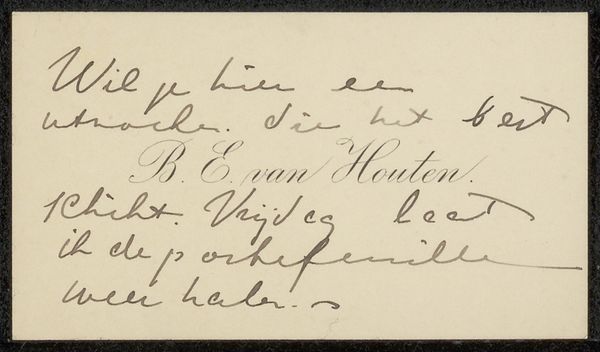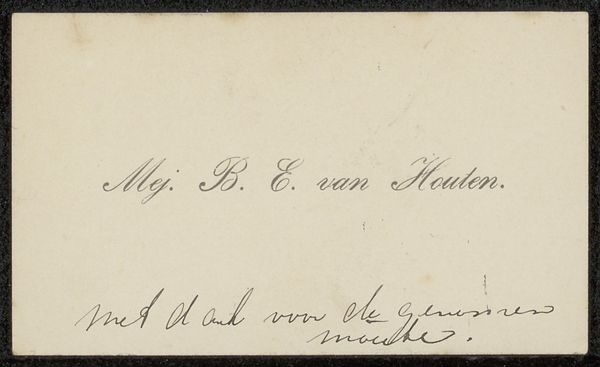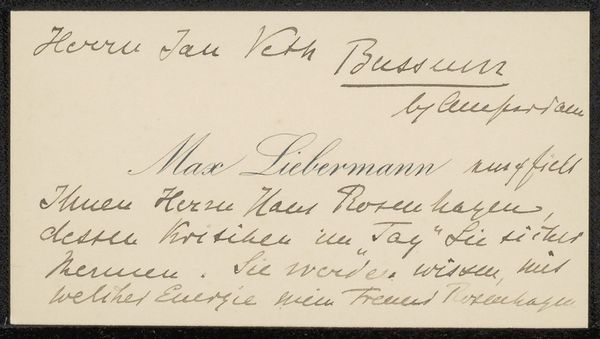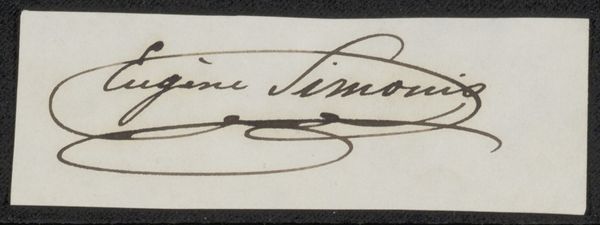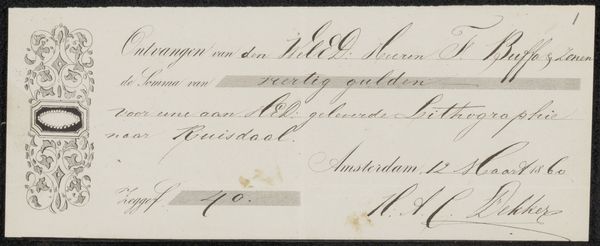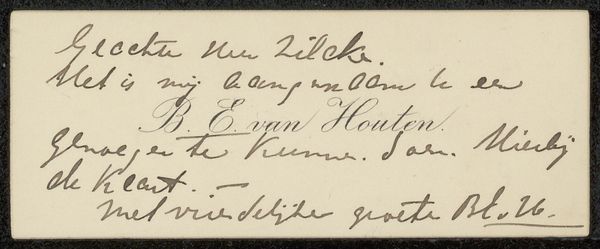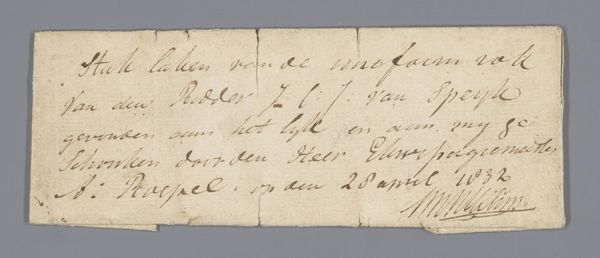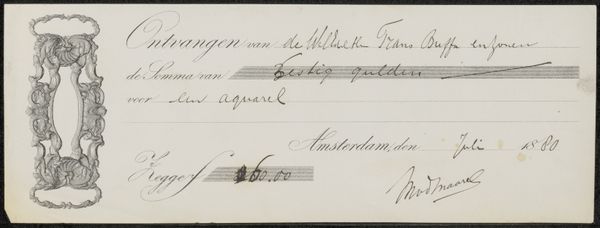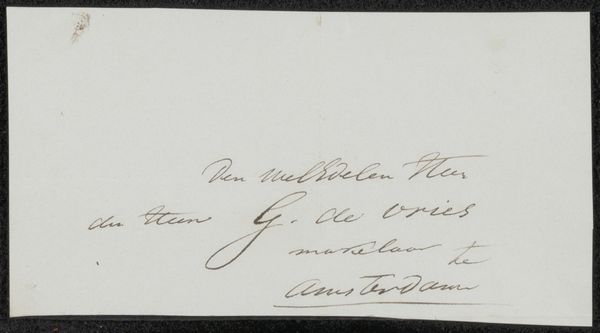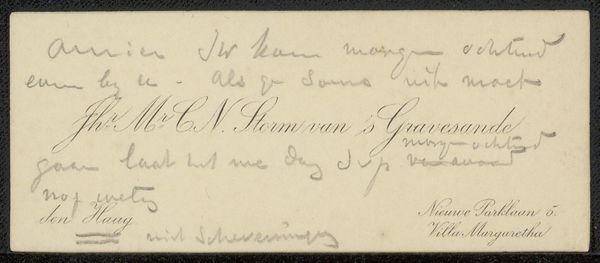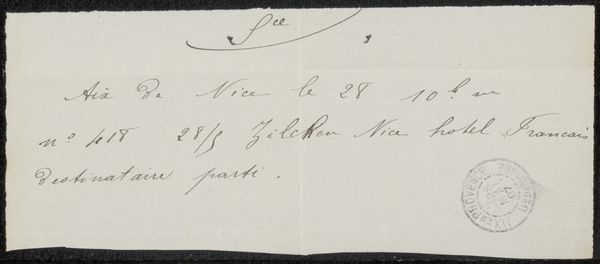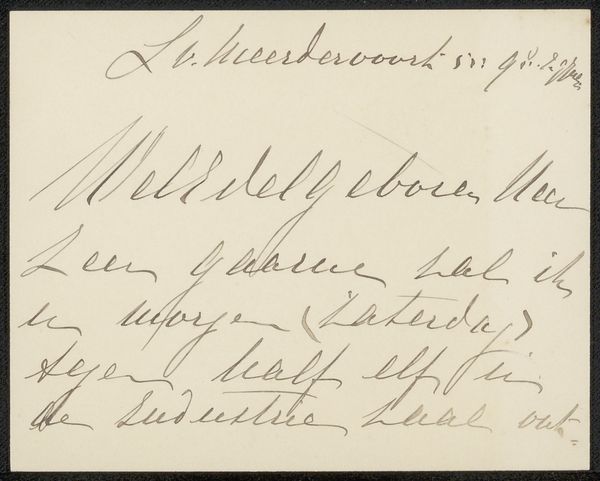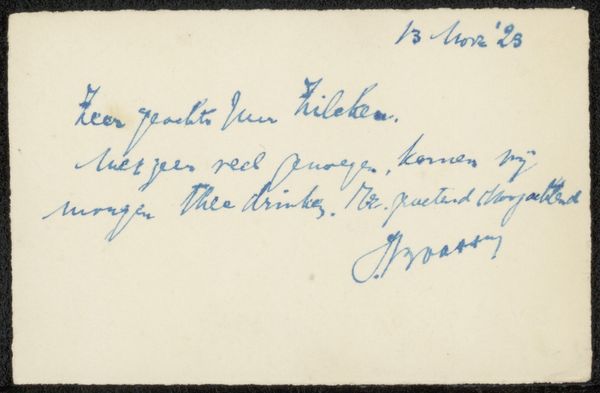
# print
#
calligraphy
Copyright: Rijks Museum: Open Domain
Curator: This is a calling card, "Visitekaartje aan Philip Zilcken," by Barbara Elisabeth van Houten. While its exact date is uncertain, we know it was made sometime between 1886 and 1930, employing print techniques and gorgeous calligraphy. Editor: It feels intensely personal, like a whispered secret on parchment. The delicacy of the lettering speaks volumes, a quiet assertion amidst a clamorous world. Curator: It's intriguing, isn't it? Van Houten was connected to artistic circles, and these calling cards served a critical function: forging connections and establishing one's presence within a community. We need to examine what kind of materials she was using to achieve this kind of aesthetic; her craftsmanship allowed her work to act as an entry point for potential collaborations, patronage or sales, I believe. Editor: Indeed. Note also how the address included here situates her specifically in Brussels—and how that placement within a network inevitably dictates the parameters of Van Houten's world. The “Société des aquafortistes belges” inscription situates her with others that produced aquafort—essentially an etched print using acid. Considering its role in feminist history, it becomes potent and complex; what opportunities and obstacles did this landscape offer a woman artist at the time? How does Van Houten participate and contribute? Curator: Precisely. These were far more than polite formalities. Think about the physical act of creation and reproduction. Van Houten would etch a design on a metal plate and then employ a chemical process to create texture that will be transferred to the medium via a press, allowing for identical versions on paper to be produced to extend the distribution. Editor: Absolutely. We are witnessing labor, process, and a performance of self all at once. By claiming space and visibility within these printmaking circles—historically male dominated and gate-kept, for that matter—Van Houten challenges traditional power structures and gender norms by asserting artistic agency and entrepreneurship. Curator: Ultimately, analyzing this card brings a person, networks, and craftsmanship all to life! Editor: It is a beautiful microcosm to deconstruct; an invitation to re-think not only about how women artists function, but how we connect the political with the personal, challenging art’s accepted norms.
Comments
No comments
Be the first to comment and join the conversation on the ultimate creative platform.
